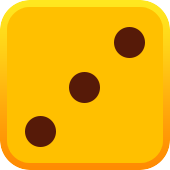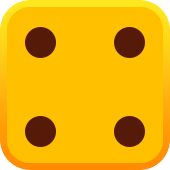












Poker looks tricky from the rail, but the logic is simple once you see the order behind every move. This guide removes jargon, shows the table layout, and walks through a complete hand with exact actions you can copy. You’ll learn what wins, when to fold, how to size bets, and when to show. By the end you’ll read boards faster and act with less doubt, live or online, using short drills and compact tables as a checklist. You also get quick reminders to review after each session at home. Practice at how to play poker.
Poker awards the pot to the best five-card hand or the last player not folded. Most tables seat 6–9 players, and the Button controls who acts first and last. Blinds start action and chips record commitment. For a quick start, follow a concise how to play poker tutorial during your first sessions.
Use a 52-card deck ranked Ace high to Two. Ace may play low only in A-2-3-4-5. Hands compare by category first and then by kickers. Learn the ladder below to avoid slow reveals.
|
Hand |
Beats |
Notes |
|
Royal Flush |
All |
A-K-Q-J-10 same suit |
|
Straight Flush |
Four of a Kind |
Five in sequence, same suit |
|
Four of a Kind |
Full House |
Four same rank |
|
Full House |
Flush |
Three of a kind + pair |
|
Flush |
Straight |
Five same suit |
|
Straight |
Three of a Kind |
Five in sequence |
|
Three of a Kind |
Two Pair |
Three same rank |
|
Two Pair |
One Pair |
Two different pairs |
|
One Pair |
High Card |
Two same rank |
|
High Card |
— |
Best single card |
Two forced bets start each deal: Small Blind and Big Blind to the left of the Button. Live cash examples include $1/$2 and $2/$5, while tournaments raise levels on a clock. Chips are stacked by color and cards are dealt clockwise. Positions matter for how to play poker plan and profit.
|
Position |
Also Called |
Acts When |
|
Button |
Dealer |
Last post-flop |
|
Small Blind |
SB |
First post-flop |
|
Big Blind |
BB |
Last pre-flop |
|
Under the Gun |
UTG |
First pre-flop |
|
Cutoff |
CO |
Right of Button |
Each hand follows repeatable gameplay steps: deal, decide, and reveal in stages. Pots grow as players commit chips or surrender. If all but one player folds, the hand ends immediately. To stay organized under pressure, learn the how to play poker steps and run them the same way each time.
|
Stage |
Cards Dealt |
Who Acts First |
Primary Goal |
|
Pre-Flop |
2 to each player |
UTG |
Choose to play or fold |
|
Flop |
3 community |
SB |
Measure equity and initiative |
|
Turn |
1 community |
SB |
Narrow ranges with pressure |
|
River |
1 community |
SB |
Price thin value or bluffs |
You get two hole cards and choose to fold, call, or raise. Favor premiums early and widen as position improves. Use a short list of starting hands that keep you out of trouble. Decide your aim before acting so later streets follow a plan.
Three community cards land and create value or draws. Compare your how to play poker equity to a range, not a single hand. Bet when you have value or fold equity; call when the price is right. Board texture matters: wet boards change fast; dry boards suit small stabs.
The fourth card changes pot odds, so sizes usually rise. Recheck whether you chase folds or value and drop bluffs that lost equity. Control the pot with medium strength by checking more often. When draws improve, re-price your hand and continue only with a clear story.
The last card fixes outcomes and shrinks ranges. Thin value bets add many small wins; hero calls must be rare and reasoned. Ask if worse pays or better folds before you wager. If neither holds, check and be ready to fold.
If action ends in a call, the last aggressor shows first. The winning five cards can be any mix allowed by the variant. If others fold earlier, no one must show. Keep cards visible and avoid exposing mucked hands.
Act clockwise, speak clearly, and make chips match your words. String bets and out-of-turn actions are not valid and may draw penalties. Keep cards on the felt and protect them with a chip. Most rooms share core procedures and four betting rounds; check posted how to play poker beginners before you buy in.
Check passes action with no bet facing. A bet places chips first; a raise increases an existing wager. A call matches the price; a fold surrenders the pot. Keep motions steady and declare to avoid disputes.
|
Action |
When Used |
Effect |
Quick Tip |
|
Check |
No bet facing |
Passes decision |
Plan a response |
|
Bet |
First to wager |
Sets the price |
Pick a purpose |
|
Call |
Facing a bet |
Continues |
Know your odds |
|
Raise |
Facing a bet |
Applies pressure |
Target range gaps |
|
Fold |
Any time facing a bet |
Exits and saves chips |
Protect bankroll |
Pre-flop, Under the Gun acts first; post-flop, the Small Blind acts first. Seats near the Button see more information and control pot size. Tighten early and attack more often late. Defend blinds selectively and avoid bloated pots out of position.
Hold’em is the default, but other games sharpen reads. Differences focus on hole cards and how you build five-card results. Change tables only when you can track ranges cleanly. Ignore searches like how to play poker slots; that phrase refers to a different casino product.
Players get two private cards and use five community cards to make the best five. A blind structure and four decision points make study simple. Start tight-aggressive, value bet clearly, and fold when dominated. Tie each session to the exact routine you practiced.
Each player gets four private cards and must use exactly two with three from the board. Equities run closer, so draws are strong and second-best hands costly. Favor nut draws and redraws over weak two pair or dominated flushes. Track suits and blockers to avoid paying off.
This house-banked table game pits Player versus Dealer with three cards each. Post an Ante, peek, then either make a Play bet or fold; the Dealer often needs Q-high or better. Payouts and bonuses vary by sign, so confirm before you sit. Many searches for how to play poker point to this compact variant. Before you play, make sure to read the terms on the bonus page so you know the wagering requirements.
Build a routine, not streaky heroics, and keep notes. Start at limits where mistakes are cheap. Review hands with friends or software and fix leaks. As you progress, refine your how to play poker strategy with range charts.
Folding is the quickest fix for losses because weak holdings leak slowly. Enter with position or with clear equity and a plan. Use pre-made charts early, then adjust to table flow. Let impatience belong to opponents.
Tag tendencies fast—tight, loose, passive, or aggressive—and adapt lines. Note timing, sizing, and showdowns to map ranges. Value-bet callers and bluff folders. Keep a small notebook or app for quick tags.
Write down three spots after each session and state what you missed. Recreate them with software to test better lines. Convert lessons into short rules you can recall. Practice risk-free in apps that offer how to play poker for free. Explore the best slot online games available at Lucky Tiger Casino and enjoy high-quality gameplay.




